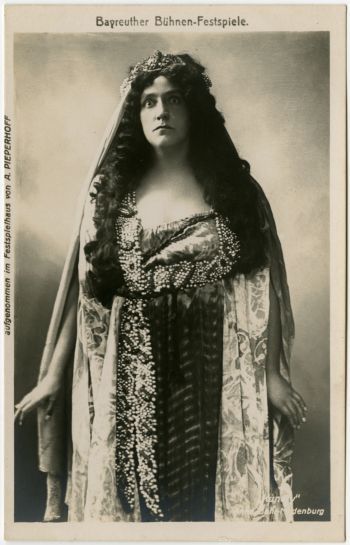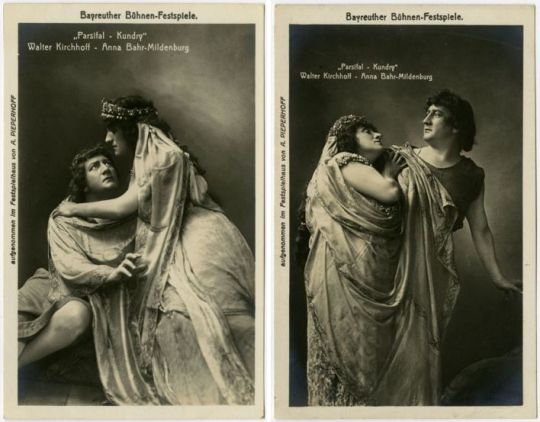#Cosima Bellini
Link
Holy shit, this one has been a long time coming.
I started this ‘little’ fic in... August, last year? Finished the first part, got interrupted by some IRL stuff, got some MAJOR writer’s block, finished another part... Then I started about maybe 2 to 3 dozen other pieces, finished almost 20 of them, then FINALLY got back around to working on this thing.
And now, it’s finally done, all 7.4k words of it. Enjoy.
#agents of mayhem#aom#oc#gigabyte#ashley sycamore#joule#cosima bellini#friday#stephanie albright#braddock#janel braddock#daisy#piper andrews#rama#pranati malhotra#gremlin#katy fox#safeword#kinzie kensington
4 notes
·
View notes
Text
I love playing Joule. 😍
#agents of mayhem#massive heart eyes#agent joule#i love running her with either Gat/Hollywood or Braddock/Oni#i am liking the game more than i thought#but i am in love with Joule#cosima bellini
10 notes
·
View notes
Photo



19 notes
·
View notes
Photo

#Aom#agents of mayhem#Joule#cosima bellini#honestly she's so pretty#okay everybody in this game is pretty but she's just so niiice#wish i could play this game c':
398 notes
·
View notes
Text
Dating Joule Would Include...
you would definitely be one of the cutest couples to ever grace the world
she’s definitely a romantic
and i feel like she would be a fan of big gestures to show you how much she loves you
she has super soft hair that’s so nice to touch
she’s super sweet with her you, always letting you know just how much she cares about you
she asks for a kiss for good luck whenever she has to go out on a mission
she would like longer kisses, and holds your face whenever you have one
she likes to cook meals together with you and she’s an excellent chef
she’d want to celebrate every milestone in your relationship
three months of dating? a nice candle lit dinner
moving in together? a special date night would go perfectly with that
i feel like she would really enjoy stargazing
sometimes you’ll take selfies together and she likes to surprise you with a kiss right as the picture’s taken
she generally wakes up fairly early, and she likes to just lay in bed with you
she calls you a lot, sometimes even in the middle of a fight
it’s kind of worrying because joule you could die, but she likes to hear your voice, it helps her focus
look this isn’t really part of the imagine but i love joule so much and i just think she would be a really good gf so please be good to her
#agents of mayhem imagine#agents of mayhem#aom imagine#aom#joule#cosima bellini#aom joule#boss mod#request by anon#joule is my wife and love her so much
26 notes
·
View notes
Photo

*heart eyes*
52 notes
·
View notes
Text
Just got some Ark dialogue with Rama: "Red Card's not so bad, once you get to know him. Terrible dancer though." and like... 1. The teammates get along <3!!! 2. That Rama has seen Red Card dance means either that he dances regularly on the Ark or that Joule took them both out to a party or BOTH and all of those thoughts are good
15 notes
·
View notes
Text


Anna Bellschan von Mildenburg (29 November 1872 – 27 January 1947) was an eminent Wagnerian soprano of Austrian nationality. Known as Anna Bahr-Mildenburg after her 1909 marriage, she had been a protégé of the composer/conductor Gustav Mahler during his musical directorship at the Hamburg State Opera. In 1898, Mahler took her to the Vienna State Opera, where she established herself as one of the great stars during his celebrated tenure there as music director. She studied voice with Rosa Papier and Johannes Ress at the Conservatory of Gesellschaft der Musikfreunde in Vienna (now the University of Music and Performing Arts Vienna), and then privately with Cosima Wagner and Mahler. She had an affair with the latter which lasted until 1897.
Von Mildenburg made her operatic debut in 1895 at Hamburg, singing the role of Brünnhilde in The Ring Cycle under Mahler's baton. Then, in 1897, she performed the role of Kundry in Parsifal at the Bayreuth Festival, and also took on the mezzo-soprano part of Ortrud in Lohengrin. Cosima Wagner, the composer's widow, became her mentor at Bayreuth, and she proceeded to perform all the main Wagnerian soprano parts at the festival prior to the outbreak of World War I in 1914.
She first sang at the Vienna Hofoper on 8 December 1897, when she took the role of Brünnhilde in Die Walküre under Hans Richter. Mahler put her on a contract and she soon experienced enormous success. In her first season alone she earned 14,000 gulden (about €112,000 in 2008). Her stature at the opera house equaled that of Mahler, who was then the establishment's director of music. She would perform at the Vienna State Opera until 1917, and then again in 1919-1920. Among her most celebrated performances during this period was an assumption of Isolde's role in a famous production of Tristan und Isolde mounted under Mahler's leadership.
Away from Vienna, von Mildenburg sang to acclaim in London at the Royal Opera House, Covent Garden, performing Isolde and Elizabeth in Tannhäuser there in 1906, as well as Klytemnestra in the first London production of Richard Strauss' Elektra. Her repertoire was not confined, however, to works by Strauss and Wagner. She also appeared in Beethoven's Fidelio, Bellini's Norma, Mozart's Don Giovanni and Weber's Oberon during the course of her career.
From 1922 to 1927, von Mildenburg was a guest artist at the Salzburg Festival, appearing in Hugo von Hofmannsthal's stage work Das Salzburger große Welttheater, among other productions. After retiring from opera, she gave singing lessons in Munich. Among those she instructed in Munich were Lilian Benningsen, Fritz Schaetzler, and the renowned Wagnerian tenor, Lauritz Melchior, who consulted her in 1922. After 1929, she taught voice at the International Mozarteum Summer Academy in Salzburg, but she returned briefly to the stage in 1930 to sing one last Klytemnestra at Augsburg.
#Anna von Mildenburg#Anna Bahr-Mildenburg#Richard Wagner#Gustav Mahler#Cosima Wagner#Der Ring des Nibelungen#Parsifal#Bayreuth Festival#Bayreuther Festspiele#Tristan und Isolde#Royal Opera House#Covent Garden#Tannhäuser#Richard Strauss#Elektra#Ludwig van Beethoven#Fidelio#Vincenzo Bellini#Norma#Wolfgang Amadeus Mozart#Don Giovanni#Carl Maria von Weber#Oberon#Salzburg Festival#Salzburger Festspiele#Die Walküre
7 notes
·
View notes
Link
happy 200th birthday, queen.
edit: the text, for anyone under paywall (below the cut):
Toward the end of her life, the opera diva Pauline Viardot took stock of her vast social network. She wrote a three-page, multicolumn list of everyone she had ever met, worked with or loved.
She ended up with over 300 names, a who’s-who of 19th-century icons: composers like Rossini, Liszt and Schumann; novelists like George Sand, Victor Hugo and Ivan Turgenev, her lover; Giuseppe Mazzini and Napoleon III.
Viardot entertained many of them at the weekly salons she held at her home in Paris. Classical musicians have rarely connected so widely with important figures of the day; the closest American parallel might be Leonard Bernstein, who hobnobbed with presidents and Hollywood glitterati.
But like Bernstein, Viardot — born exactly 200 years ago, on July 18, 1821 — was far more than a Zelig. One of the supreme singers of her time, she was also a prolific composer, whose music is slowly being salvaged from obscurity; a savvy entrepreneur; a gifted visual artist; and a highly respected voice teacher.
Born Michelle-Pauline-Ferdinande-Laurence Garcia, in Paris, Viardot was an heir to a musical dynasty. Her father, Manuel Garcia, was an international opera star and the first Count Almaviva in Rossini’s “The Barber of Seville.”
Born in Spain, Garcia never stayed in one place for long, moving his wife and three children — Viardot’s older sister, Maria Malibran, became another of the century’s reigning divas — to Italy, Paris and London. And then in 1825, when Viardot was 4, to the United States, where his family and troupe introduced Italian operas, sung in their original language, to the American public.
Viardot’s musical talents emerged early. She took piano lessons with Liszt and developed a girlhood crush on him. As a young woman, she played duets with Chopin, a friend. But when she was 15, her mother dashed her dreams of becoming a concert pianist, declaring that Pauline would pursue the family trade: singing opera.
She made her debut in 1839 in London as Desdemona in Rossini’s “Otello,” then hit her stride four years later when she brought the house down at the Bolshoi Theater in Moscow as Rosina in “The Barber of Seville.”
“Ravishing, velvetlike notes rang out, of the sort that no one, it seemed, had ever heard,” an audience member later recalled, adding, “Instantly an electric spark ran round the audience.”
When she was 18, she met and married the historian, art critic and theater director Louis Viardot, 21 years her senior. In a reversal of gender norms, he resigned from his post as director of the Théâtre Italien in Paris after their wedding to focus on Pauline, her career and, ultimately, their four children.
With a voice of uncommon range and flexibility, Viardot became famous on Europe’s major stages in signature roles that included Zerlina and Donna Anna in “Don Giovanni,” Adina in Donizetti’s “L’Elisir d’Amore” and the title role in Bellini’s “Norma.”
“Her technical skill alone is immense; in the completeness of her chromatic scale she is, probably, without a rival,” said an article published in Fraser’s Magazine, a London journal, in 1848.
But, the writer went on, “the principal feature which characterizes her is the dramatic warmth of her impersonations. She throws herself heart and soul into a part.”
Composers sought her out for important premieres: She was the first Fidès in Meyerbeer’s “Le Prophète” and Charles Gounod’s first Sapho. When Berlioz resurrected Gluck’s “Orfeo” for the Parisian stage in 1859, Viardot was the diva for whom he rewrote the title role. A decade later, Brahms chose her as the soloist for the premiere of his Alto Rhapsody.
After retiring from the opera stage in 1863, Viardot continued singing in concerts and being what we’d call today a macher. She owned the original manuscript of Mozart’s “Don Giovanni,” which composers including Fauré and Tchaikovsky made pilgrimages to see. In 1869, she wrote an effusive letter to Richard Wagner congratulating him on a performance of “Die Meistersinger.” But his notorious anti-Semitic essay, “Judaism in Music,” published under his name the following month, soured the relationship, and Wagner and his wife, Cosima, began referring derisively to Viardot as a “Jewess.” (She was not Jewish.)
Following her father, who was a gifted composer as well as a brilliant singer, Viardot put significant time and energy into composing. Her work is not nearly as widely known as that of Robert Schumann, Liszt, Saint-Saëns or others in her social circle. But her music was deeply appreciated by her contemporaries, with one person going so far as to compare her talent to Schubert’s. Clara Schumann referred to her as “the greatest woman of genius I have ever known.” A fierce advocate for her students, she died, just a month shy of her 89th birthday, in 1910.
Today, her works are enjoying a resurgence among scholars and performers — part of a wave of interest in long-neglected composers like Amy Beach, Florence Price, Clara Schumann and others.
Viardot wrote hundreds of pieces, the majority of them songs for solo voice and piano. Her first was “L’Enfant de la montagne,” published when she was just 19 in a collection organized by Meyerbeer, Paganini and Cherubini. Like so many of her songs, she was its major advocate, using it to show off her vocal skills in concerts in Leipzig, Germany, and other cities.
Her songs have more recently become popular fare for prima donnas including Annick Massis, Cecilia Bartoli and Aude Extrémo. They range from playful and virtuosic (“Vente, niña, conmigo al mar”) to hauntingly beautiful (“L’Enfant et la Mère” and “Hai luli”). The publisher Breitkopf und Härtel has released a new critical edition of some of the songs on texts by Pushkin, Fet and Turgenev. (Viardot’s Russian was superb.) She also wrote works for piano and violin, the instrument of her son, Paul Viardot. Her other three children, also musicians, performed her compositions, too.
True to her specialty, Viardot also wrote operas. These were mostly performed by her students and children in her home, with piano accompaniment, but at least one, “Le Dernier Sorcier,” was orchestrated and performed in 1869 in Weimar Germany.
Wolf Trap Opera in Virginia has revived her “Cendrillon” just this weekend. Viardot wrote both the music and words for this chamber operetta about Cinderella, a fanciful interpretation of the fairy tale by Charles Perrault.
“Her music is both challenging and wonderfully singable,” Kelly Kuo, the production’s conductor, said in an interview. “You just know that it was written by someone who really understood what she was doing.”
Among the guests at the 1904 premiere of “Cendrillon” were the editor and musician Salvatore Marchesi and his wife Mathilde, an influential voice teacher. Finding Viardot’s music charming, they wrote of their certainty that it would have “a successful run through the world.” Although somewhat delayed, their prediction is perhaps beginning to come true.
“Viardot,” Kuo said, “is a perfect example of an artist who should be much better known today.”
#Pauline Viardot#Pauline Viardot-Garcia#happy birthday#composers#women composers#classical music#opera#opera tag#divas#a true queen
22 notes
·
View notes
Photo

Kudos to @megafreeman for the link, though probably the only thing accurate about Joule here is her age.
7 notes
·
View notes
Text
Blog Post #10
Wagner and His Dream
Wagner was a tenacious man who was determined to convince the world that art is one of the profoundest influences on the world. Geoffrey Skelton specifically states in this article, “Wagner considered himself to be a dramatist and was fully aware of the importance of the place where his work was presented”. So Wagner was clearly aware that he was great and might have also been aware of his importance in the future. He was constantly coming up new ways to create and approach theater even if it hadn’t been done before, pointing to his genius and significance. In regards to religion, Wagner thought that art is basically religion. The author states, “His conviction that the function of art is basically religious”. The author mentions that Wagner cited Beethoven enthusiasts as being more active and energetic citizens then those under the spell of “Rossini, Bellini, and Donizetti”. I think this is who Wagner wants to attend his operas because he believes that theater is more than just entertainment and with these types of energetic audience members, they might care more about what they are watching than just being entertained. Wagner was banished from Germany in 1848-1849 during the revolutions. He was banished because of his involvement in left-wing politics and his regular meetings with other radical people. Wagner left Germany to visit Paris and eventually ended up in Zurich. Wagner’s work came into the hands of King Ludwig II two year before he actually became king. Ludwig wanted to summon Wagner and offer him unlimited freedom to put his ideas to practice. Ludwig admired Wagner and even wanted to build a theater in which Wagner could show off his art. Wagner believed that his opera house should be built in a small German city so that visitors could approach the performance in a proper receptive spirit, unburdened by the daily cares and undistracted by rival entertainments. Munich was not the ideal city as it was too large to adhere to Wagner’s dream. The inside of the Bayreuth opera house was projected to have an amphitheatrical auditorium and a concealed orchestra. These features were to be built because, as Wagner states, “If one has ever listened to the pure, ethereal tone of an orchestra heard through an acoustical barrier, freed of all unavoidable non-musical sounds an instrumentalist makes in producing his notes, and if one imagines how advantageously the singer must appear to the onlooker when the space between them is uninterrupted, then one has only to add the ease with which the words can be understood, to be persuaded of the success of my proposed arrangement”. Wagner had two daughter and eventually a son with his second wife Cosima. His son would be the one to carry on Wagner’s work. Wagner said, “A fine strong son with high forehead and clear eyes, Siegfried Richard, will inherit his father’s name and keep his works alive”. Wagner had many ideas for innovations for this opera house. He wanted a wide fan of tired rows spreading out from the stage and also to hide the orchestra. To make the opera seem more like a magical dream, Wagner put in another, bigger arch around the first proscenium arch. The Margravial Opera house in Bayreuth did not have these innovations that Wagner wanted and it did not fit the dream he had for his opera house, so he rejected it.
1 note
·
View note
Photo


35 notes
·
View notes
Photo


33 notes
·
View notes
Photo

Agents Of Mayhem The Movie Fan Cast Part 3 Nazanin Boniadi as Dr. Pranati Malhotra/Rama Mila Kunis as Cosima Bellini/Joule Jai Courtney as Ingo Rotkapp/Red Card Kap G as Herman Jimenez/Mixer #AgentsOfMayhem
0 notes
Text

Anna Bellschan von Mildenburg (29 November 1872 – 27 January 1947) was an eminent Wagnerian soprano of Austrian nationality. Known as Anna Bahr-Mildenburg after her 1909 marriage, she had been a protégé of the composer/conductor Gustav Mahler during his musical directorship at the Hamburg State Opera. In 1898, Mahler took her to the Vienna Opera, where she established herself as one of the great stars during his celebrated tenure there as music director. She studied voice with Rosa Papier and Johannes Ress at the Conservatory of Gesellschaft der Musikfreunde in Vienna, and then privately with Cosima Wagner and Mahler. She had an affair with the latter which lasted until 1897.
Von Mildenburg made her operatic debut in 1895 at Hamburg, singing the role of Brünnhilde in The Ring Cycle under Mahler's baton. Then, in 1897, she performed the role of Kundry in Parsifal at the Bayreuth Festival, and also took on the mezzo-soprano part of Ortrud in Lohengrin. Cosima Wagner, the composer's widow, became her mentor at Bayreuth, and she proceeded to perform all the main Wagnerian soprano parts at the festival prior to the outbreak of World War I in 1914.
She first sang at the Vienna Hofoper on 8 December 1897, when she took the role of Brünnhilde in Die Walküre under Hans Richter. Mahler put her on a contract and she soon experienced enormous success. In her first season alone she earned 14,000 gulden (about €112,000 in 2008). Her stature at the opera house equaled that of Mahler, who was then the establishment's director of music. She would perform at the Vienna State Opera until 1917, and then again in 1919-1920. Among her most celebrated performances during this period was an assumption of Isolde's role in a famous production of Tristan und Isolde mounted under Mahler's leadership.
Away from Vienna, von Mildenburg sang to acclaim in London at The Royal Opera House, Covent Garden, performing Isolde and Elizabeth in Tannhäuser there in 1906, as well as Klytemnestra in the first London production of Richard Strauss' Elektra. Her repertoire was not confined, however, to works by Strauss and Wagner. She also appeared in Beethoven's Fidelio, Bellini's Norma, Mozart's Don Giovanni and Weber's Oberon during the course of her career.
From 1922 to 1927, von Mildenburg was a guest artist at the Salzburg Festival, appearing in Hugo von Hofmannsthal's stage work Das Salzburger große Welttheater, among other productions. After retiring from opera, she gave singing lessons in Munich.
5 notes
·
View notes
